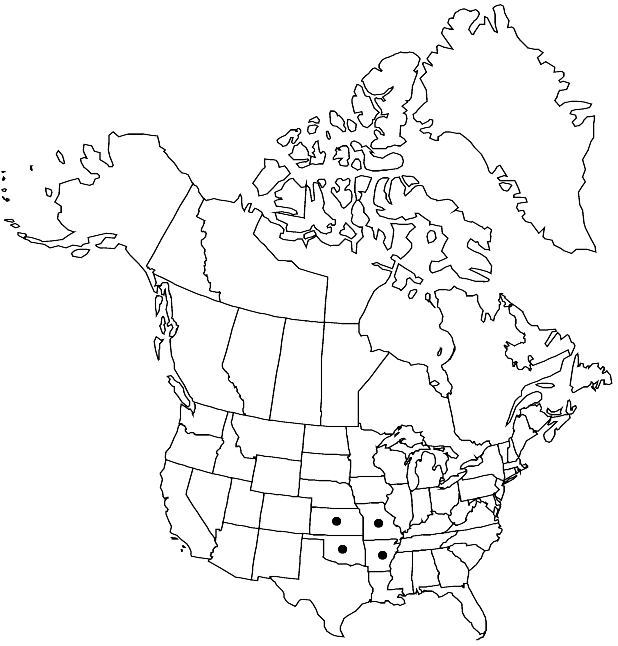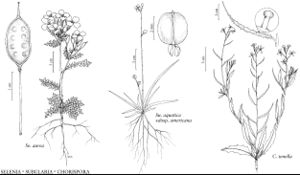Selenia aurea
J. Acad. Nat. Sci. Philadelphia 5: 132, plate 6. 1825.
Plants not winter annuals. Stems (simple or few to many from base), usually erect to ascending, rarely subdecumbent, (slender), (0.5–)0.8–2.7(–3.5) dm. Basal leaves not rosulate; petiole 0.5–1 cm; blade margins 1-pinnatisect, (1–)2.5–7(–10) cm; lobes (3–)6–12(–18) on each side, (smaller than terminal), linear to oblong or ovate, (1–)2–10 × 0.5–1(–2.5) mm, margins entire or coarsely dentate. Cauline leaves (and bracts) similar to basal, smaller distally. Fruiting pedicels from racemes, (6–)10–22(–30) mm, (slender). Flowers: sepals spreading to ascending, oblong-linear, (3.5–)5–7 × 1–1.5 mm, apex appendage not developed; petals spatulate, (8–)10–13 × 3–4.5 mm, apex rounded; median filament pairs 5–7(–8) mm, not dilated basally; anthers oblong, 1–1.5 mm; gynophore (0.5–)1–2(–5) mm, or, rarely, obsolete. Fruits usually oblong to elliptical, rarely suborbicular, usually latiseptate, rarely inflated, (0.5–)1–2.5(–3) cm × (3.5–)5–8(–11) mm, (not fleshy, thin-papery), base and apex acute; valves faintly reticulate-veined; replum flattened; septum complete or perforated; ovules (8–)10–20 per ovary; style 3–9(–12) mm, slender or flattened basally. Seeds 3–4 mm diam.; wing 0.5–1 mm. 2n = 46, 138.
Phenology: Flowering Mar–May.
Habitat: Sandy open grounds, barren rocky sandstone or clay, granite soil, rocky grounds, shale barren, open areas in mixed juniper and oak, chert barrens, pastures, sandstone glades, fields, rocky prairies
Elevation: 100-400 m
Distribution

Ark., Kans., Mo., Okla.
Discussion
Although R. C. Rollins (1993) and R. F. Martin (1940) suggested that Selenia aurea probably occurs in northeastern Texas, I have not seen any material from that state.
Selected References
None.
